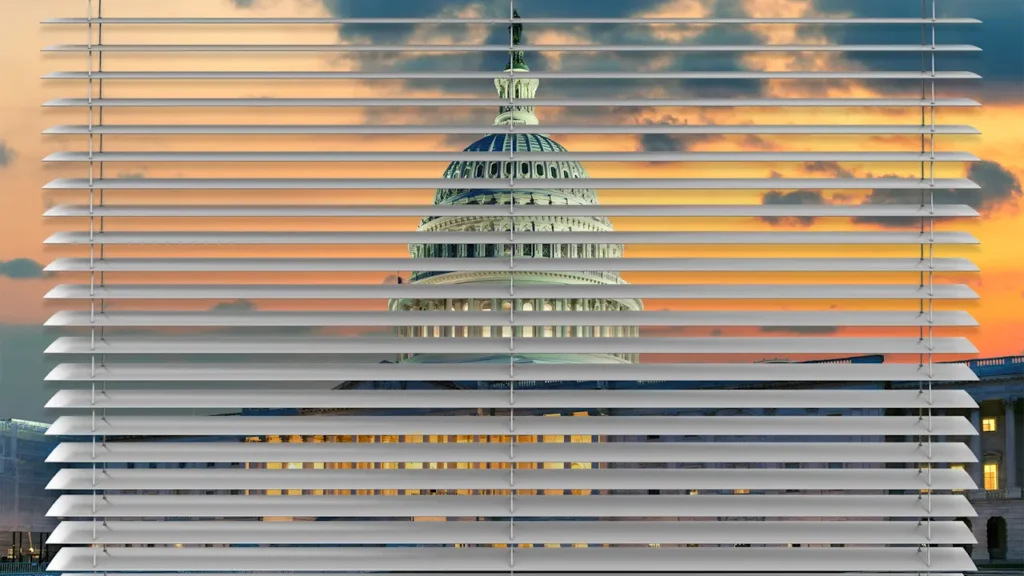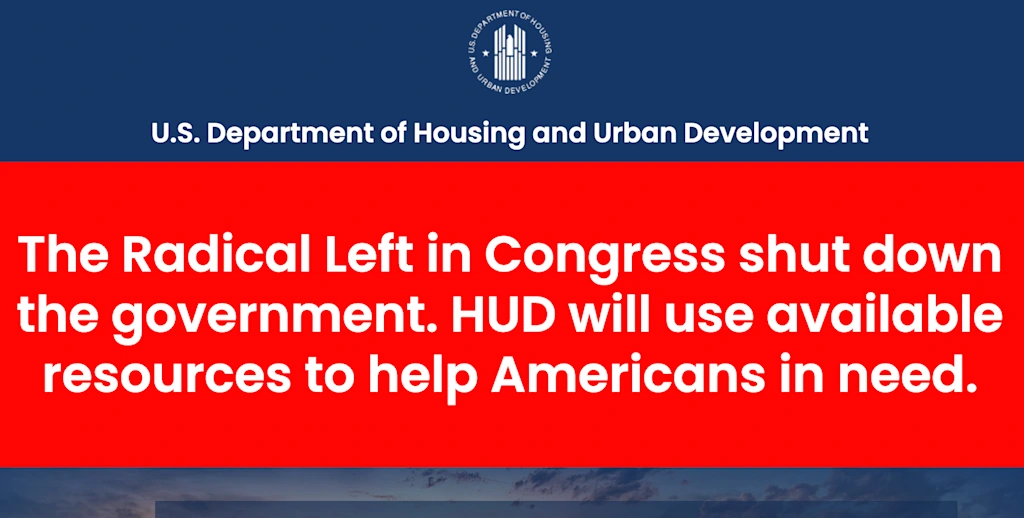
The federal government shut down after midnight last night. Capitol Hill is snarled by a partisan impasse, with no word as to which side might cave, work across the aisle, and try to garner the votes needed to pass a new spending bill.
The last government shutdown was at the end of 2018—during President Trump’s first term in office—and lasted into the early part of 2019. At 35 days, it was the longest shutdown in four decades.
As for what caused this latest shutdown? In the simplest terms, a previously passed bill to fund the federal government’s operations expired as of Wednesday, October 1. The House and Senate need to pass a new spending bill, which then needs to be signed by the president, to keep the federal government operating.
That hasn’t happened, and may not happen anytime soon.
But while government shutdowns are not all that unusual, this shutdown is different—and for a simple reason: the Republican Party, which has majorities in both the House and Senate, as well as the White House, may have little or no motivation to reopen the government.
‘It’s very difficult to see what the exit strategy is’
Traditionally, politicians and elected officials have incentives to keep the government operating as smoothly as possible. This shows that they’re effective leaders, for one, and that they are capable of actually governing. If they’re unable to handle those basic aspects of their job descriptions as elected officials, conventional wisdom suggests that voters will make them pay for it at the ballot box.
However, despite the prospect of electoral blowback, the majority party, in this case, appears to actually be relishing in the current circumstances.
“The administration has historically been motivated to minimize the harm to the public . . . and that was even true for the previous shutdown during the first Trump term,” says Max Stier, president and CEO of the nonprofit Partnership for Public Service, who has worked in all three branches of the federal government starting in the early 1980s.
“This time, the administration appears interested in using the shutdown to do extra damage to the government and the public,” Stier adds. “It’s very difficult to see what the exit strategy is—on one hand, you have an administration that wants to use the government to diminish the government, and the other side is motivated by an enraged base that wants them to make a stand. This is how [the Democrats] have chosen to do so.”
Since Trump took office early this year, he has presided over widespread spending cuts and reductions in government services. The shutdown, in some ways, actually works toward his administration’s goals of reducing the size and scope of the government.
The president has even threatened mass layoffs in the event of a shutdown, something that goes way beyond the typical funding impasse rhetoric.
And now that the government has in fact shut down, key services, far and wide, are either reduced or mothballed until a new spending bill is passed. Tens of thousands of government employees are or will be furloughed, laid off, or made to work without pay.
The White House and its supporters in the GOP-controlled Congress appear unfazed—at least for now. Democrats, conversely, are incentivized by their own voters, and those voters have been clamoring for the party to stop making concessions.
In terms of specific sticking points, Democrats want Republicans to fund healthcare subsidies to reduce premium costs for millions of Americans, which Republicans have, so far, balked at.
So negotiations have devolved into a partisan blame game, with both parties hoping that voters will blame the other side for the shutdown.
For evidence of how much worse the rhetoric is this time around, visit the website of the U.S. Department of Housing and Urban Development (HUD), whose home page currently displays a bright-red banner denouncing the “Radical Left in Congress.”

What the parties are saying about blame
In a joint statement, Democratic House Minority Leader Hakeem Jeffries and Senate Minority Leader Chuck Schumer said that “after months of making life harder and more expensive, Donald Trump and Republicans have now shut down the federal government because they do not want to protect the healthcare of the American people.”
“Democrats remain ready to find a bipartisan path forward to reopen the government in a way that lowers costs and addresses the Republican healthcare crisis. But we need a credible partner,” the statement continued.
Senate Majority Leader John Thune has cast the blame on Democrats, as reported by Fox News.
“We simply asked Democrats to extend existing funding levels to allow the Senate to continue the bipartisan appropriations work that we started,” he said. “And Senate Democrats said no,” he added. “Why? Because far-left interest groups and far-left Democrat members wanted a showdown with the president. And so, Senate Democrats have sacrificed the American people to Democrats’ partisan interests.”
Senator Ted Cruz, another stalwart Republican, echoed Thune in a statement of his own.
“Senator Schumer and the Democrats have made it clear that they intend to shut down the federal government,” he said. “Their demands include taxpayer-funded healthcare for illegal aliens and a reversal of the Republican reforms blocking handouts to able-bodied adults who refuse to work.”
As for whether the back-and-forth is making a meaningful impact, it remains to be seen. A poll, published on Tuesday by NPR/PBS News/Maris, showed that 38% of respondents blame Republicans for the shutdown, 27% blame Democrats, and 31% blame both.
What’s next?
It’s difficult to predict what happens next. In all likelihood, it’ll depend on which side blinks first, and which side sees members signal their willingness to vote for a new funding bill.
Reporting from Punchbowl News, published Wednesday morning, notes that three Democratic senators have agreed to vote for a Republican-backed stopgap funding bill. But five more would need to come on board to pass it, as it would need a total of 60 votes in the Senate. And then the House would need to pass it as well.
While there may be movement in response to voter sentiment in the days ahead, in the more immediate term, the back-and-forth public blame game will likely continue.
But experts like Stier expect the country is in for a lengthy shutdown. The American people, he says, will start to feel the effects as the shutdown drags on. In time, that could incentivize legislators to move toward a solution, even if it means ending up with egg on their face.
“Everybody gets hurt, and there’ll be some direct damage to people losing services,” Stier says. “I worry we’re not looking at a day-long shutdown, or even a lengthy one, like we had at the end of 2018. This could be much longer.”



